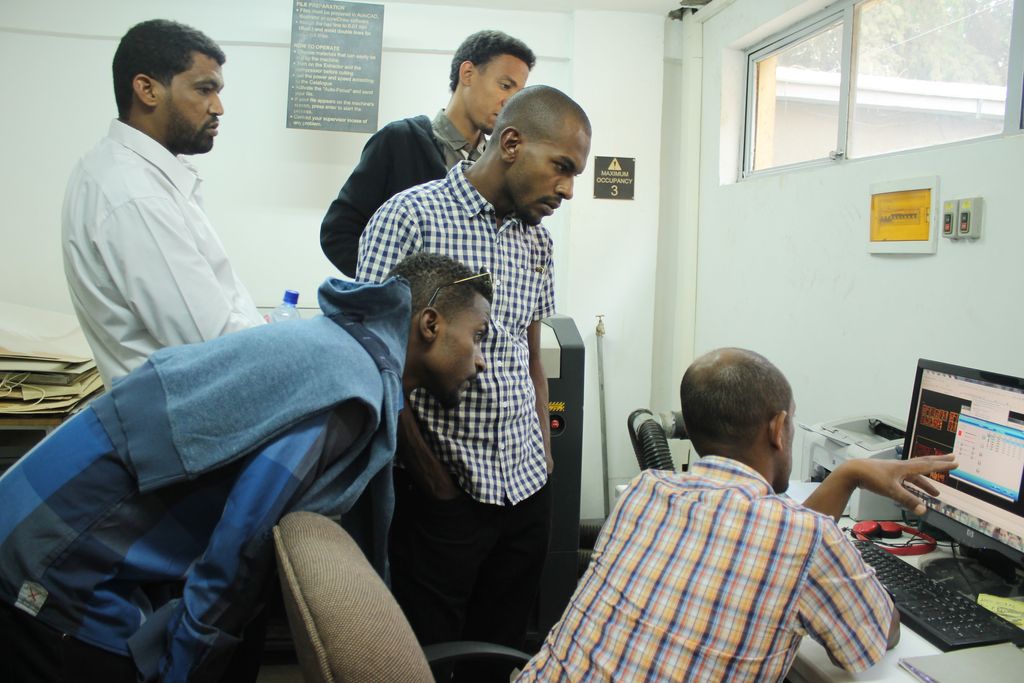Installing new software on your computer may seem like a straightforward task, but it requires careful preparation to ensure a smooth and successful process. From checking system requirements to securing your system, each pre-installation step plays a crucial role in preventing potential problems. This article explores the key steps you should take before installing computer software, shedding light on their importance and providing practical advice to guide you through the process.
Key Takeaways
- Always check if your system meets the software’s minimum requirements to avoid installation problems and ensure optimal performance.
- Use antivirus software to scan for potential threats before the installation process, ensuring a smooth and secure setup.
- Perform a disk cleanup to remove unnecessary files and programs that may hinder the installation process.
- Ensure a stable internet connection during the installation process to prevent interruptions and errors.
- Create a backup of your system before installing new software to protect your data and enable system recovery in case of problems.
Understanding the Importance of Pre-Installation Preparations

The Role of Pre-Installation Steps in Software Setup
Pre-installation steps play a crucial role in ensuring a smooth and successful software setup. These steps are designed to prepare your system for the new software and to minimize potential issues during the installation process. They involve a series of checks and preparations that can significantly enhance the user experience and increase user satisfaction.
The pre-installation process includes several key steps:
-
Checking system requirements: This involves identifying your computer’s specifications and comparing them with the software requirements to ensure compatibility.
-
Creating a backup of your system: This is a crucial step to safeguard your data in case something goes wrong during the installation process.
-
Ensuring a clean installation environment: This involves removing old software versions and cleaning your system for a fresh installation.
-
Securing your system: This includes updating your system’s security measures and ensuring the presence of antivirus software for safe installation.
-
Understanding the installation process: This involves reading and understanding the software’s installation guide to avoid common installation errors.
Tip: Always take the time to carefully go through the pre-installation steps. Skipping these steps can lead to installation issues, reduced system performance, and even data loss.
By following these pre-installation steps, you can ensure that the software is installed and configured correctly, providing a smooth and hassle-free installation process. This not only improves the user experience but also reduces the need for support services and the associated costs, leading to significant savings in terms of time and money.
Potential Risks of Skipping Pre-Installation Preparations
Skipping pre-installation preparations can lead to a variety of issues that may negatively impact the software installation process and its subsequent operation. One of the primary risks is compatibility issues. Without proper preparation, the new software may not be compatible with your system’s hardware or other installed software, leading to operational problems or even system crashes.
Another risk is the potential for data loss. If the installation process encounters a problem and needs to be rolled back, any data not backed up could be lost. This is especially true if the software being installed interacts with critical system files.
- Time-consuming troubleshooting
- Potential data loss
- System instability
- Increased security risks
Remember: The time spent on pre-installation preparations can save you from future headaches.
Lastly, skipping pre-installation preparations can leave your system vulnerable to security threats. Many software installations include updates to security protocols or system files. Without these updates, your system may be left exposed to potential threats.
Checking System Requirements

Identifying Your Computer’s Specifications
Before installing any new software, it’s crucial to identify your computer’s specifications. These specifications include the processor type, amount of RAM, hard drive space, and the operating system version. To find this information, you can navigate to the ‘About This PC’ or ‘System Information’ section on your computer. For Windows users, this can be found by right-clicking on ‘This PC’ and selecting ‘Properties’. Mac users can click on the Apple icon in the top left corner and select ‘About This Mac’.
Here’s a simple breakdown of what to look for:
-
Processor (CPU): This is the brain of your computer. It’s important to know its speed (in GHz) and the number of cores it has.
-
Memory (RAM): This is your computer’s short-term memory. The more RAM you have, the more tasks your computer can handle at once.
-
Storage (Hard Drive or SSD): This is where all your files and software are stored. You need to ensure you have enough free space for the new software and its future updates.
-
Operating System (OS): The software that runs all other software. You need to know the version and whether it’s 32-bit or 64-bit.
Tip: Always leave at least 15% of your hard drive free. This space is used for system processes and helps maintain optimal performance.
Once you’ve identified your system’s specifications, you can compare them with the software’s system requirements. This will help you determine whether your computer can handle the new software or if you need to upgrade some components.
Creating a Backup of Your System

Why Backups are Essential Before Software Installation
Before installing new software, creating a backup of your system is a crucial step. This process ensures that your data is safe, even if something goes wrong during the installation. A backup is essentially a copy of your system’s data, which can be restored if necessary. This means that if the software installation causes any issues, you can revert your system back to its previous state, preventing data loss and system instability.
There are several reasons why backups are essential before software installation:
-
Data protection: Backups provide a safety net for your data. If the new software causes data corruption or loss, a backup allows you to restore your data.
-
System stability: If the software installation fails or causes system instability, a backup enables you to restore your system to its previous, stable state.
-
Time and effort saving: Restoring from a backup is often faster and less effort than trying to fix the issues caused by a failed or problematic software installation.
Remember, it’s always better to be safe than sorry. Always create a backup before installing new software.
In conclusion, backups are not just a safety measure, but a necessary step in the software installation process. They protect your data, ensure system stability, and save you time and effort in the long run.
Steps to Create a Comprehensive System Backup
Creating a comprehensive system backup is a crucial step before installing new software. This process ensures that your data is safe and can be restored if something goes wrong during the installation. Here are the steps to create a system backup using a popular backup software, EaseUS Todo Backup:
- Open the software and click on ‘Select backup contents’.
- Among the four available categories, select ‘OS’. The software will automatically select your system partition.
- Choose the backup destination. Both Local Drive and Network-Attached Storage (NAS) are available options.
- After the backup process is complete, you can check the backup status, recover, open, or delete the backup by right-clicking the backup task.
Tip: Regularly take inventory of all the computing devices you care about and ensure they are backed up. If you don’t care about them and know you can quickly reinstall, then the lack of a backup is an acceptable risk.
Remember, it’s always better to be safe than sorry. A comprehensive system backup can save you from potential data loss and provide peace of mind during software installations.
Ensuring a Clean Installation Environment

How to Clean Your System for a Fresh Installation
Before installing new software, it’s crucial to ensure your system is clean and ready for a fresh installation. This process involves two main steps: disk cleanup and ensuring a stable internet connection.
Disk cleanup is the process of removing unnecessary files and programs that take up valuable disk space and can slow down system performance. Windows users can utilize built-in tools like Disk Cleanup or third-party applications such as CCleaner. This step is essential to remove temporary files, old installations, and other redundant data that may hinder the installation process.
Having a stable and reliable internet connection is also crucial, especially if you’re downloading the software directly from the internet. A slow or intermittent internet connection can result in incomplete downloads or corrupted files, leading to installation failures.
Here is a simple step-by-step guide to clean your system:
- Run a disk cleanup using built-in tools or third-party applications.
- Uninstall unnecessary programs and files.
- Ensure a stable and reliable internet connection.
Remember, a clean system not only increases the chances of a successful installation but also improves overall system performance.
Securing Your System

The Role of Antivirus Software in Safe Installation
Installing antivirus software on your PC is not only crucial for protecting your device from malware and viruses, but it also plays a significant role in ensuring a smooth software installation process. Antivirus programs scan files and applications for potential threats before they are installed on your computer. By running an antivirus scan prior to software installation, you can identify and eliminate any malicious files that may interfere with the process.
Here are some steps to follow:
- Update your antivirus software to the latest version.
- Run a full system scan to check for existing threats.
- Only after the scan completes and all threats are resolved, proceed with the software installation.
Remember, keeping your antivirus software updated is essential for maintaining the highest level of protection against new threats.
While antivirus software provides a layer of protection, it’s not foolproof. Some sophisticated threats might slip through. Therefore, it’s also important to ensure that the software you’re installing is downloaded from a trusted source. This reduces the risk of downloading software that’s been tampered with malicious code.
Updating Your System’s Security Measures
Keeping your system’s security measures up-to-date is crucial in ensuring a safe software installation. Regularly updating your antivirus software and operating system can help protect your computer from potential threats. If you encounter an error message stating, "Your device is missing important security and quality fixes", it’s a clear indication that your system requires immediate attention. This error typically occurs when your computer is running a significantly outdated operating system or hasn’t been updated in a while.
Here are some steps to resolve this issue:
- Open the Control Panel.
- Click on ‘Uninstall a program’.
- Select ‘View installed updates’.
- Find the most recently installed update, right-click on it, and select ‘Uninstall’.
- Reboot your computer and check for Windows updates.
- If necessary, use the Windows Update Assistant to download and install the most recent Windows Update files.
Tip: Always backup your data before updating your system. This allows you to revert to a previous version if something goes wrong during the update process.
Remember, maintaining an updated system is not just about keeping Windows up-to-date. It’s about ensuring the overall health of your computer and keeping your data safe from potential threats.
Understanding the Installation Process

Common Installation Errors and How to Avoid Them
Installation errors can be a major hurdle in setting up new software. These errors can range from invalid input to insufficient disk space, and even interrupted installations. Each of these errors can be mitigated with careful preparation and understanding of the installation process.
- Invalid Input: Always ensure that the input provided during the installation process is correct. This includes usernames, passwords, and any other required information.
- Insufficient Disk Space: Before starting the installation, check the software’s system requirements and ensure that your computer has enough disk space.
- Interrupted Installations: Avoid running other heavy applications during the installation process to prevent interruptions.
Tip: Always read the software’s installation guide thoroughly to understand the process and avoid common errors.
Another common issue is the impact of the installation on system performance. To avoid this, close all unnecessary applications before starting the installation. This ensures that the installation process does not interfere with other applications or drastically decrease system performance.
Finally, always validate the installation instructions. They should be easy to understand and accurately depict the installation process. This not only helps in avoiding errors but also improves the user experience and increases user satisfaction.
Conclusion
In conclusion, installing new software on your computer is a process that requires careful preparation to avoid potential problems. Ensuring your PC meets the minimum system requirements, running an antivirus scan, performing a disk cleanup, and maintaining a stable internet connection are all crucial steps. Additionally, it’s important to understand the installation instructions and validate the documentation. Lastly, always remember to back up your data before any major software installation. By following these steps, you can ensure a smooth and error-free installation process.
Frequently Asked Questions
Why is it important to check system requirements before installing software?
Checking system requirements ensures that your PC has the necessary hardware and software to run the new program effectively. If your PC doesn’t meet the minimum requirements, the software may not install correctly, run slowly or not run at all.
How does antivirus software contribute to a smooth software installation process?
Antivirus software scans files and applications for potential threats before they are installed on your computer. This helps to identify and eliminate any malicious files that may interfere with the installation process.
Why should I create a system backup before installing new software?
Creating a system backup before installing new software allows you to restore your system to its previous state if something goes wrong during the installation process. This can help protect your data from potential loss.
What is the role of disk cleanup tools in software installation?
Disk cleanup tools help remove unnecessary files and programs that take up valuable disk space and can slow down system performance. Cleaning your disk before installing new software can help ensure a smoother and faster installation process.
Why is a stable internet connection needed during software installation?
A stable internet connection is often required to download the software installation files, receive important updates, and in some cases, to validate the software license. Interruptions in the connection can cause the installation process to fail.
What common installation errors should I be aware of?
Common installation errors include insufficient disk space, invalid input, and interrupted installations. Properly reading and understanding the software’s installation guide can help prevent these errors.




